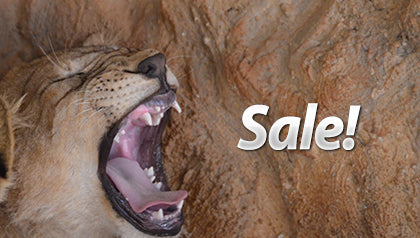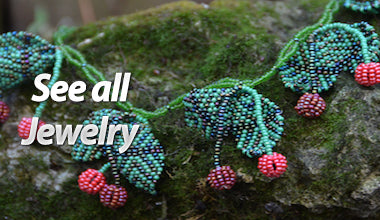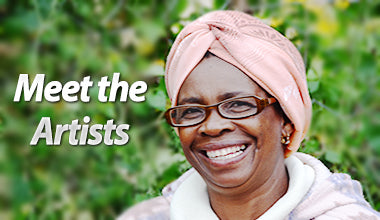10 Ways to Fight Poverty in Africa for Under $100.00
 10 Ways To Fight Poverty in Africa For Under $100
10 Ways To Fight Poverty in Africa For Under $100
I first starting traveling to Africa in the 1980’s and I had just graduated from college. With virtually no money, my boyfriend and I would pick our vacation spots during those early years based on the cheapest airfare. Over time we traveled to many different countries and had lots of great experiences, yet most of these were in third world countries. Naturally our dollars went much further in poorer countries versus developing nations and it helped that we didn’t have refined palates at the time. A beer and a burger in a sidewalk cafe in Costa Rica or a mystery wrap from a street vendor in Cairo and we were happy. (I only really got sick once or twice – not bad odds for years of travel).
I look back on those trips and I realize now what an impact all those days and weeks spent in impoverished places had on who I am today. I remember staying in a hotel where the lobby literally looked like it had been bombed. I remember quickly eating my dinner with one hand while keeping the flies off it with my other hand. I remember going to sleep in a B&B that was so cold I wore 3 sweatshirts, a dress, 2 pairs of socks, and a hat to keep from going numb.
Those weren’t the memories that made those trips great. It was the memories of the things I saw and the people I got to know, that really made those times special. We always made a point to talk to the locals, share a meal, and engage them in conversation. What we learned was beyond what you could read in a Frommers’ Travel book. And even though many of these people had only shacks to sleep in, had little food to feed their families with, and certainly no material wealth, I always felt like they gave us something priceless. I felt special in being able to see what most people will never see - an insight into their lives, their thoughts, their feelings, even though they lived in abject poverty.
My travels nourished me and over the years I became very comfortable walking beside people of every race, religion, sexual orientation, etc. As the founder of LivAfrika, I still travel but my perspective is different now more than ever. I strive now to give back. Give back to the cultures, give back to the communities, and give back to the most important aspect of travel – the people. And it’s easier than I thought to make a substantial difference in the lives of people, especially the people of Africa, because so little goes so far and can do so much.
This blog post is the result of some time spent collecting ideas that I know are powerful, ways that you can give and have an immediate impact on impoverished lives. There are countless ways to give and countless fantastic charities, but I wanted to present 10 ways where you, for less than $100, can have a direct impact on a child, a family, even a community. Knowing you can do any, or all of these things, for less than two tanks of gas here in the USA makes my heart grow a little bigger. Share these ideas with the people you love and be sure and share the love if you decide to give anything towards helping the fight against poverty.
Help Build a Well
All of us understand there are numerous reasons why poverty has become an epidemic in Africa. It is the result of political instability, ethnic conflicts, climate change and other man-made causes. But most of us don’t understand that poverty and water are directly related.
The Water Project is tackling one of the greatest causes of poverty in Africa and one that is perhaps the most overlooked – the lack of access to clean drinking water.

Nearly one billion people do not have access to clean, safe water – which is the equivalent of 1 in 8 people on the planet! As the Water Project will show you, this is a problem that can be solved.
For less than an average of $34 per person, The Water Project is able to work with local partners to provide closer access to clean water. Their goal is to bring clean, sustainable water supplies to within a 1km (1/2 mile) of a village. By doing so, communities can be freed to begin working themselves out of poverty.
When you give to help build a well, you'll make sustainable agriculture possible. You will allow children to get back to school instead of collecting dirty water all day. You'll help father's find more time to care for their family, maintain a farm, and even run a small business.
Feed a Child for a Month (or 3!)
Malnutrition steals kids’ health and can be shocking beyond belief. Imagine meeting a young girl, who, at first glance you guess that she’s 5-years-old. But after talking to her you discover the truth. She’s 9. Her growth has been permanently stunted by lack of food and nutrition. You can fight malnutrition with the Feed the Children organization, and become part of something so much bigger – part of a team who is fighting to feed kids.
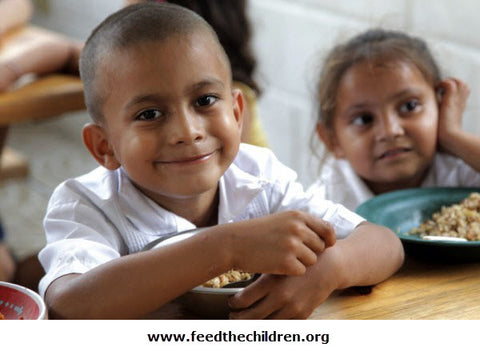
For a dollar a day, you can feed a malnourished child for an entire month with a healthy, Ready To Use Food (RTUF) called VitaMeal. VitaMeal (link to vitameal .pdf) is a specially formulated food product developed for malnourished children. Each VitaMeal package contains 30 child-sized meals, or enough food to provide a child with one nutritious meal each day for a month.
At this price, you could feed a child every day for 3 months, or feed 3 hungry children for an entire month.
Host a Painting for a Purpose Night
A "Painting for a Purpose" party is a great way to help Give Hope, Fight Poverty (GHFP), spread the word and have fun in the process! GHFP is a nonprofit whose mission is to foster philanthropy domestically by designing service-learning programs that engage US student’s and professionals with rural communities in Swaziland, Africa and work together to educate, empower and lift orphaned and vulnerable children – particularly those living in child-headed households – out of poverty.
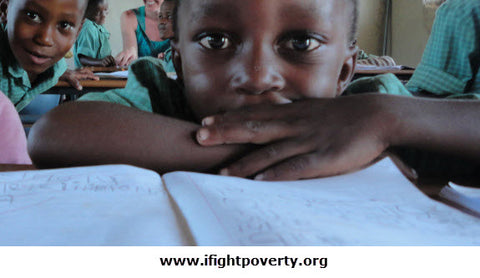
At your Painting for a Purpose Event, art teachers will bring all of the supplies necessary for you and your friends to paint "masterpieces" (no artistic skills required!). Each participant will paint either a canvas for an orphan or a piece of a mural that will be hung in their school classrooms in Swaziland! You can customize almost any event; bachelorette party, baby shower, wedding shower, birthday, or even just a girl’s night out!
This event requires a donation of $25 per person and right now it is currently only available in the Indianapolis IN, Springfield IL Lafayette IN, Chicago IL, and surrounding areas. Check out their website for more details.
Buy a Bicycle for a Health Worker
The Beyond Poverty organization has a mission; to liberate the people of the world from the burdens of extreme poverty. With a strategy of empowering local leaders of communities to be agents of transformation, they enable these communities to solve their own problems and break free from the cycle of poverty.
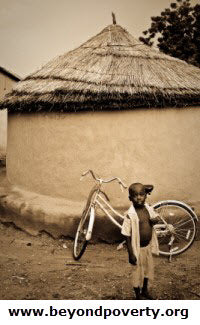
In Kenya, much of the care Kenyan rural villagers receive is from Community Health Workers traveling to the villages. These workers travel by foot nearly 10 miles per day to bring medical and health training and education to rural schools and villages. Transportation is currently slow and costs are out of pocket, making life difficult for health workers. Health education provided includes hygiene, HIV/AIDS, sanitation, STI testing, malaria prevention, how to access available medical services, child health and more. Having a low-cost means of transportation, your bicycle gift, will double the service area for a health worker.
When you buy a bicycle for a Health Worker, it immediately DOUBLES the number of families and school children a Worker can visit per month. 70 bicycles will create a fleet for 50 active health workers and new incoming health workers. Your $70 provides a Community Health Worker with a bicycle to aid in their daily work and increases direct, personal access to healthcare for patients.
One bicycle can double the amount of families and children a worker can help every month.
Give $420 Worth of Medicines for $35!
It doesn’t seem possible at first glance, but for a $35.00 donation, the World Vision organization will provide $420.00 worth of medicines to children who are dying every day because they do not have access to basic medicines that could save their lives.
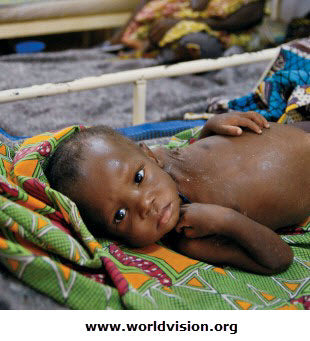
Your gift will multiply its impact 12 times over as they ship and distribute essential pharmaceuticals and medical supplies like antibiotics, anti-fungal’s, anti-parasitic drugs, de-worming medications, disposable syringes, gastrointestinal drugs, painkillers and surgical supplies.
The World Vision organization is a Christian humanitarian organization dedicated to working with children, families, and their communities worldwide to reach their full potential by tackling the root causes of poverty and injustice. They work in nearly 100 countries around the world, serve all people, regardless of religion, race, ethnicity, or gender.
At this price, you could give $105. and be donating $1,260.00 worth of medicines.
Give a Small Farm to a Family
At Heifer International, their mission is to work with communities to end world hunger and poverty and to care for the Earth. They empower families to turn hunger and poverty into hope and prosperity – but their approach is more than just giving these people a handout. They link communities and help bring sustainable agriculture and commerce to areas with a long history of poverty.
For $85.00, you can give a needy family a small farm: geese, ducks, chickens and rabbits are all included in a package Heifer International calls their Promise Gift Basket.
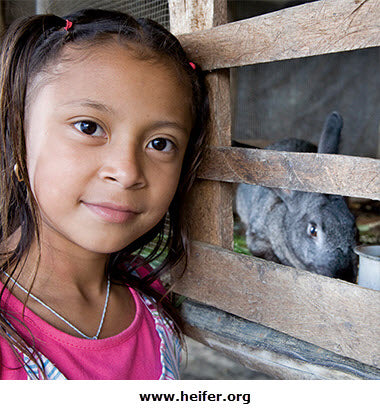
The gift basket gives that small farm to a family which results in providing income by supplying eggs and other goods to sell, and sustains the family with nourishment from protein. And in a stroke of genius, families who receive your gift become donors as they pass on the gift to other families in need in their community. This allows them to help others as you have helped them – your one gift can have up to 9x the impact!
Heifer International focuses on making sure the money earned from selling the goods produced by this gift will pay for better housing for a woman needing to find decent shelter for her poor family, as well as school tuition and supplies for her children. And it will enable her to pass on the gift quickly, securing the promise of a better future for her entire neighborhood.
Your one Promise Basket gift could end up helping over 9 families eat better every day.
Give Books
At Books For Africa, they believe that education is the great equalizer in the world, and books are at the foundation of a strong educational system. For many children in Africa, the gift of books truly is a gift of hope.
Most African children who attend school have never owned a book of their own. In many classrooms, 10-20 students share one textbook. Many people in the United States take these educational necessities for granted, but children in Africa cherish books.
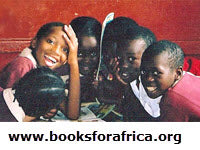
Books For Africa supplies sea containers of books to rural school libraries, orphanages, adult literacy programs, and community resource centers. Books For Africa strives to help create a culture of literacy and provide the tools of empowerment to the next generation of parents, teachers, and leaders in Africa.
Books For Africa appreciates all your book donations. It costs .50 cents to ship a book to Africa, so let’s say you have 50 books to donate (this will cost $25.00 to ship). You can mail your books to their warehouse in Atlanta, Georgia, or St. Paul, Minnesota, or you can physically drop them off at either of these locations.
You could donate up to 200 books, and pay for the shipping, for about $100.00. And Books for Africa can even handle book donations over 450 pounds.
Send Mosquito Nets
Since 2010, Nothing But Nets has partnered with the Bill & Melinda Gates Foundation to help Americans lend their voice to the fight against malaria. Together, they have contributed to sustaining strong U.S. support for the President’s Malaria Initiative and the Global Fund to Fight AIDS, TB and Malaria and getting malaria interventions to families across Africa.
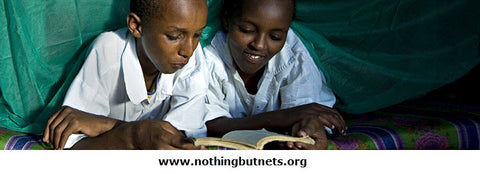
Every 60 seconds, a child dies from malaria. For a family in Africa, a net can mean the difference between life and death. For just $10, your gift purchases, delivers, and educates the recipients on its proper use. Bed nets are a simple, life-saving solution, but we need your help to provide them to those in need - you can protect a family and save a life.
At this price, you could gift 10 nets which would help 10 families live without malaria.
Gift an Eco Loo (Portable, Dry Toilet)
Practical Action works together with some of the world's poorest people throughout Africa, Asia and Latin America to help lift themselves out of poverty. Over the past forty years, they have worked with communities to develop a wide range of innovative and practical solutions to change people's lives for the better. And they’ve done it by following a unique approach to development: they don't start with technology, but with people. The tools may be simple or sophisticated, but to provide long-term, appropriate and practical answers, they must be firmly in the hands of local people: people who shape technology and control it for themselves.
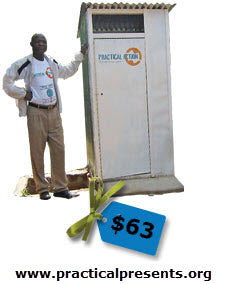
Sounds a little disconcerting, but the technology behind this dry toilet is amazing; you can read more about it here. For about $63.00 you can gift an Eco Loo to Zimbabwe. An Eco Loo is a toilet solution that is affordable, sustainable, odor-free, and maintenance-free, consumes no energy nor water, and the end product is fertilizer. It’s biological and needs no further investment for end users, nor any expenses related to energy, water, transport, treatment or any other costs.
These portable, dry toilets prevent water sources from becoming contaminated and bring vital sanitation to thousands of deprived people.
For about $63 you can help stop the spread of deadly diseases like cholera and dysentery.
Give a Girl a School Uniform and Shoes
In Africa, over twenty-four million girls do not attend primary school, and boys outnumber girls in school attendance by at least 8 percent. And of those girls who do enroll, 9 percent more of them drop out before the end of the sixth grade than boys. Education can reverse the course of a girl’s life. It can change the course of a community. It can reshape a country. But sadly, there are over 17 million girls worldwide who are never expected to attend school.
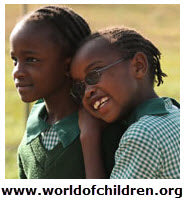
At the age of 12, Mary Grace Henry became determined to change the life of one underprivileged girl by funding her education. She started by teaching herself how to make reversible headbands with a plan to sell them at her school’s bookstore, using 100% of the profits to send a girl living in extreme poverty to school. Soon, one girl turned into many more and Reverse the Course was born, a successful social business that has sold over 14,000 hair accessories and funded the education of girls in Kenya, Uganda, Paraguay and Haiti. Without Mary Grace’s support, these girls would not have been able to attend school.
Your support will help fund a girl in Sub-Saharan Africa in Mary Grace’s program, supporting her with tuition, books, uniforms, shoes and school supplies. Not only do girls deserve an education, they deserve to look their best. A gift of $50. Is enough to buy a school uniform and shoes for one girl in need.

This is just a start! There are so many ways to donate to people in need and I wanted to show you that you don’t have to be rich by American standards to help even one person in Africa. This is what I believe and why I founded LivAfrika four years ago. I know many of you have been so supportive and encouraging of all my efforts – to give 100% of my profit back to the women and children of Africa. My list here is meant to give some details about other organizations I have run across in my research and thought I would share with you all the good things other folks are doing to help out in Africa.
Thank you for your support of LivAfrika and in my effort to give 100% of my profits back to the women and children of Africa. Your support and encouragement has meant all the difference in starting my new business and your purchases through LivAfrika makes a difference – I have seen it with my own two eyes. Thanks to all the many folks trying to make a difference!
Warm regards,
Sita Monti


 I’m not sure what drew me to Kenya initially. Maybe it was seeing the movie Out of Africa with Meryl Streep that romanticized the life of Karen Von Blixen. Or maybe it was watching life in the African bush on that old TV show, Mutual of Omaha’s Wild Kingdom as a child. Or maybe it was simply my never-ending curiosity and wanderlust that drew me to Kenya. Either way, I knew I would go there some day.
I’m not sure what drew me to Kenya initially. Maybe it was seeing the movie Out of Africa with Meryl Streep that romanticized the life of Karen Von Blixen. Or maybe it was watching life in the African bush on that old TV show, Mutual of Omaha’s Wild Kingdom as a child. Or maybe it was simply my never-ending curiosity and wanderlust that drew me to Kenya. Either way, I knew I would go there some day.








 A short while ago, I was on the hunt for any employer that would give me a chance – being 17 and still in high school, I wasn’t qualified for most job opportunities here in Tampa’s competitive and experienced job market. Sita Monti, the owner of LivAfrika, is a close friend of my mom’s and I knew she took frequent trips to South Africa and was in need of extra help. My mom explained that Sita needed someone to work part-time at her store, which is only a few minutes away from my house. I was both thankful and excited when Sita called me up and asked if I was interested in helping her out at her shop.
A short while ago, I was on the hunt for any employer that would give me a chance – being 17 and still in high school, I wasn’t qualified for most job opportunities here in Tampa’s competitive and experienced job market. Sita Monti, the owner of LivAfrika, is a close friend of my mom’s and I knew she took frequent trips to South Africa and was in need of extra help. My mom explained that Sita needed someone to work part-time at her store, which is only a few minutes away from my house. I was both thankful and excited when Sita called me up and asked if I was interested in helping her out at her shop.



 It seems like just last week that I flew home from my last trek to Africa, but it’s been a few months already! Back in September 2014, right before the craziness of the holiday season here in Tampa, I took off on another adventure to Africa and in addition to South Africa and surrounding areas - this trip included Kenya!
It seems like just last week that I flew home from my last trek to Africa, but it’s been a few months already! Back in September 2014, right before the craziness of the holiday season here in Tampa, I took off on another adventure to Africa and in addition to South Africa and surrounding areas - this trip included Kenya!







 I'm baaaaaack!
I'm baaaaaack!



